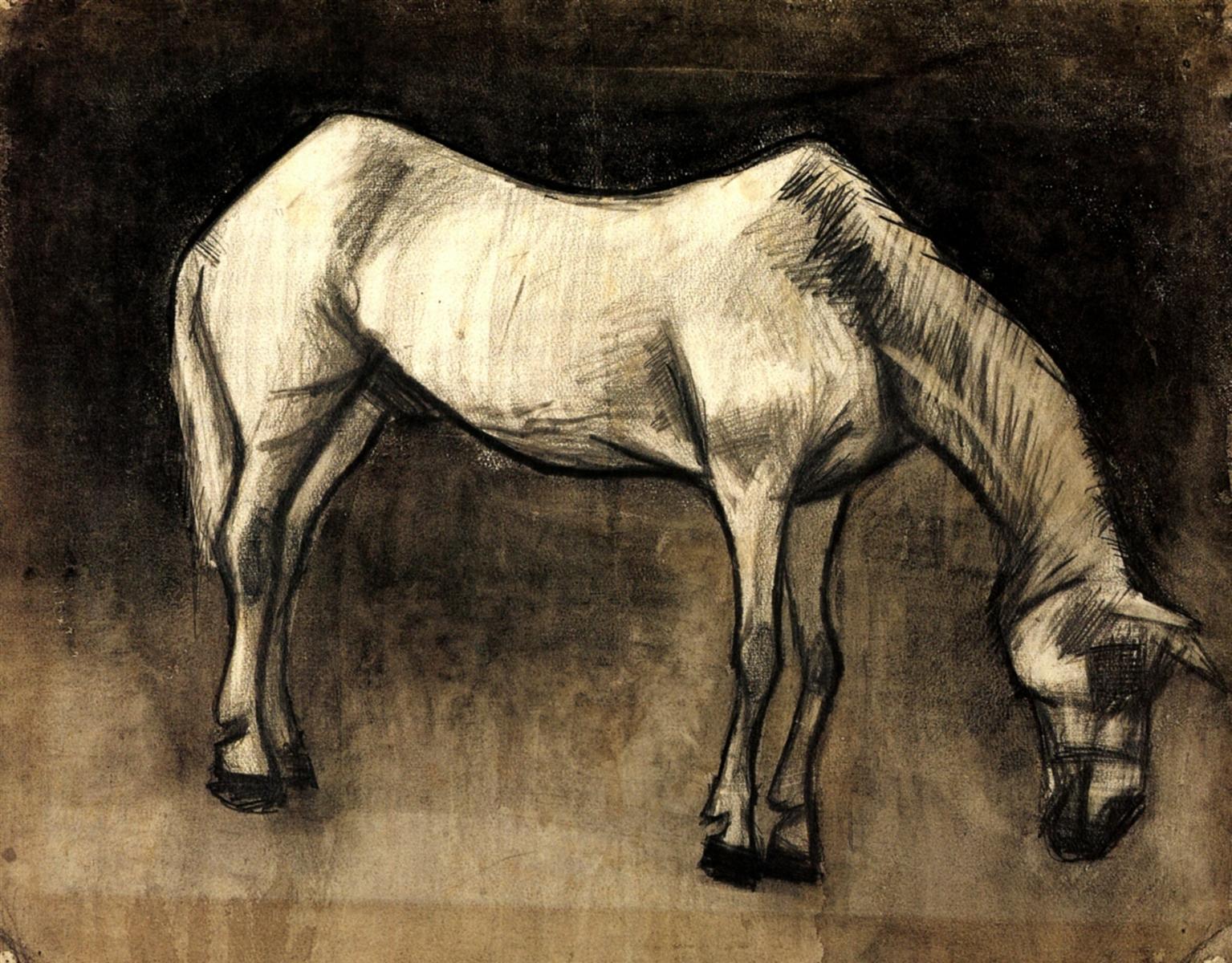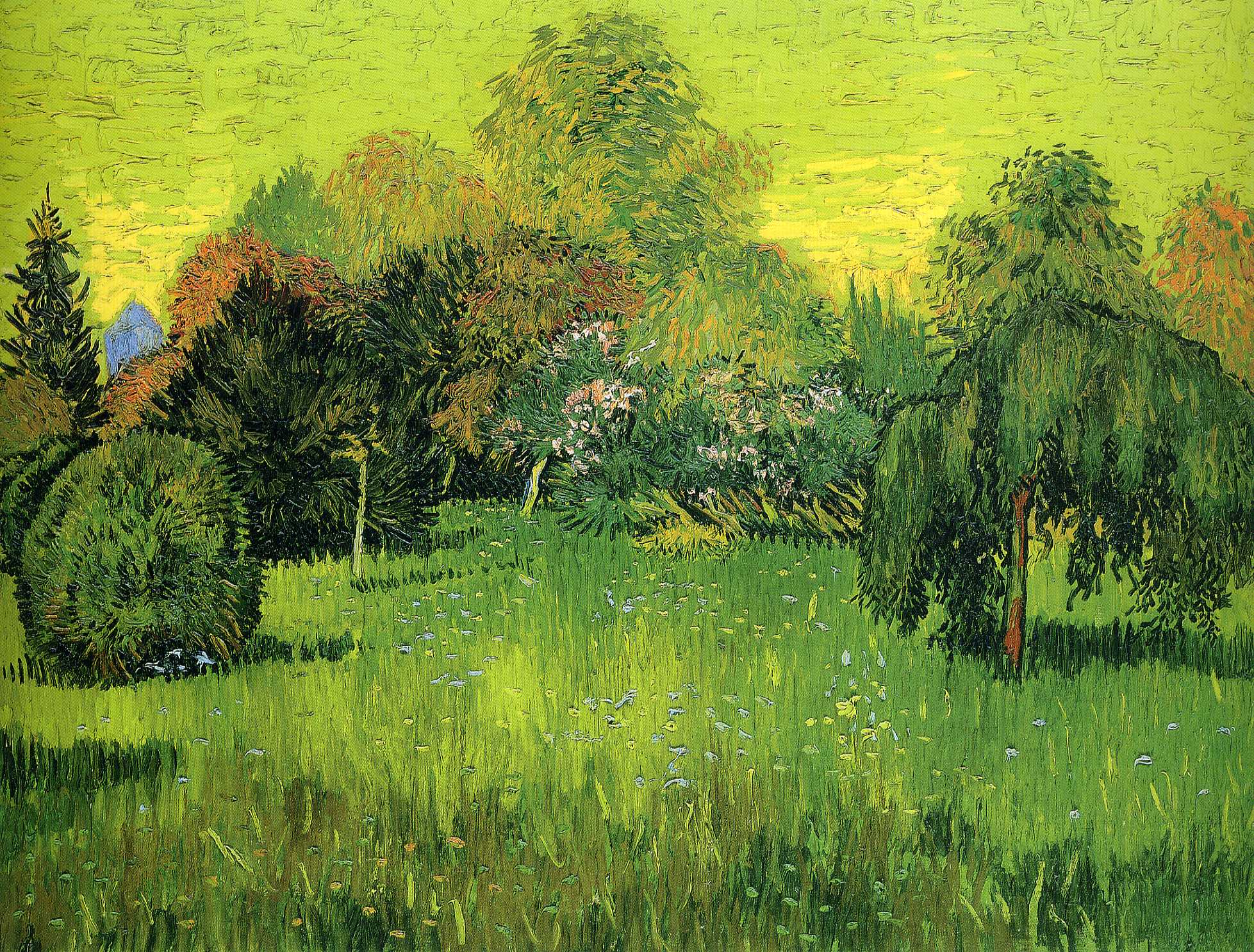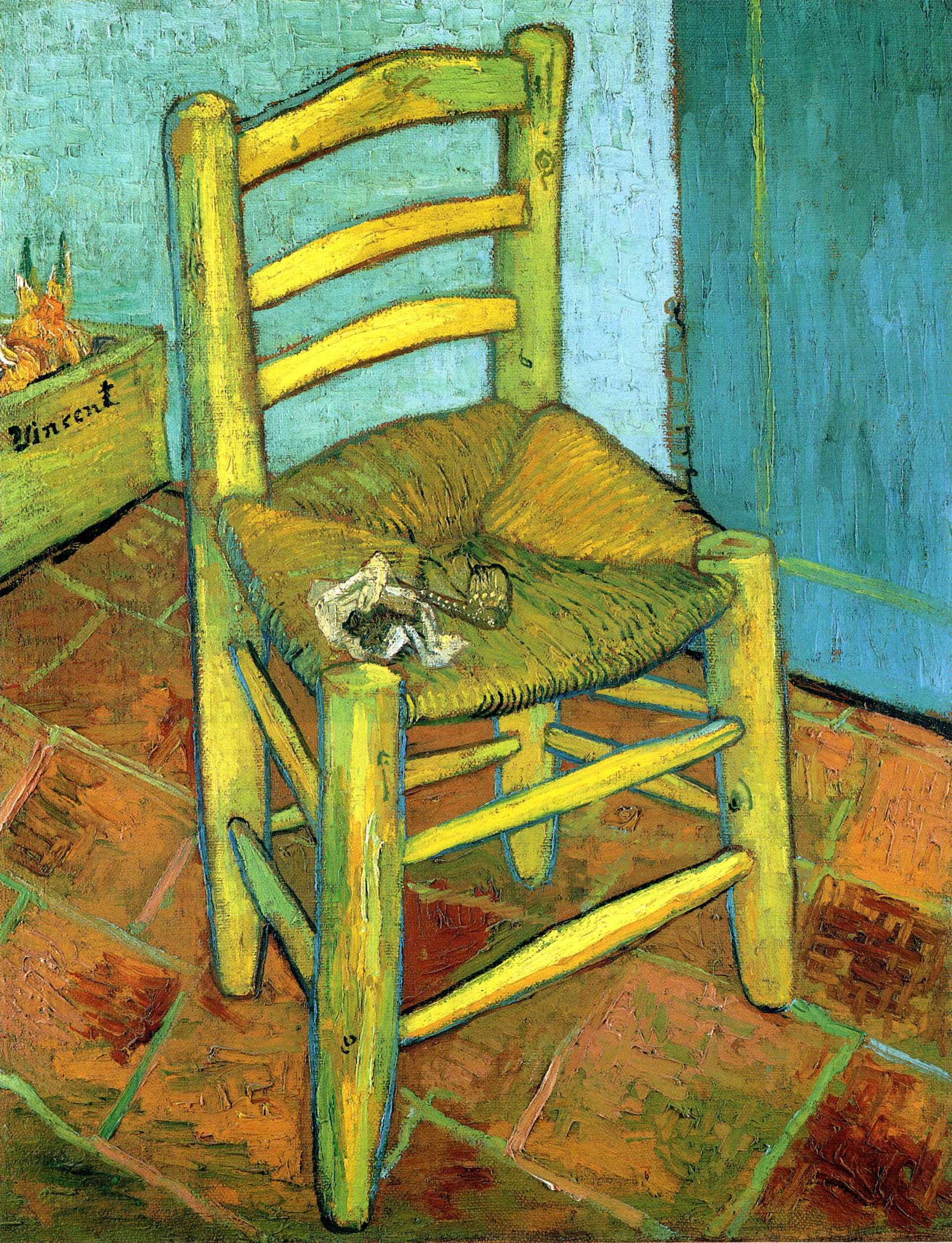… how much there is in all this that reminds one of the “saints” he promised himself and resolved to paint at some much later time! (In that one letter.)
Rainer Maria Rilke to Clara Rilke
This is the second part of Rilke’s description of van Gogh’s portfolio (the first part is here).
Van Gogh’s letter he mentions here is one of his many letters to Theo Van Gogh . On September 10, 1889, he writes:
Had I had the strength to continue, I’d have done portraits of saints and of holy women from life, and who would have appeared to be from another century and they would be citizens of the present day, and yet would have had something in common with very primitive Christians.
OCTOBER 2, 1907 (PART 2)
… Or an old horse, a completely used up old horse: and it is not pitiful and not at all reproachful: it simply is everything they have made of it and what it has allowed itself to become.

Or a garden, or a park, which is seen and shown with the same utter lack of prejudice or of pride;

or, simply, things, a chair for instance, nothing but a chair, of the most ordinary kind: and yet, how much there is in all this that reminds one of the “saints” he promised himself and resolved to paint at some much later time! (In that one letter.)

Rainer Maria Rilke to Clara Rilke
STORYLINE: THE WORK. REALITY
Another recurrent motive: all aspects of reality are equal in their profound realness, be their chairs, or lawns, or saints. For Rilke, recognition of this fundamental equality is an essential quality of a newly emerging art.
And van Gogh makes this equality more visible to us than we are capable of seeing it ourselves.
SEEING PRACTICE: SIMPLY, THINGS
A click on the reproduction of “Van Gogh’s Chair” will lead you to the high-resolution version on the website of National Gallery.
But what if we could recall this image whenever we see a chair, and realize that they all have the same striking, saint-like, realness of presence and color? I sometimes think that this alone could awaken us from the slumber we tend to call “real life”.